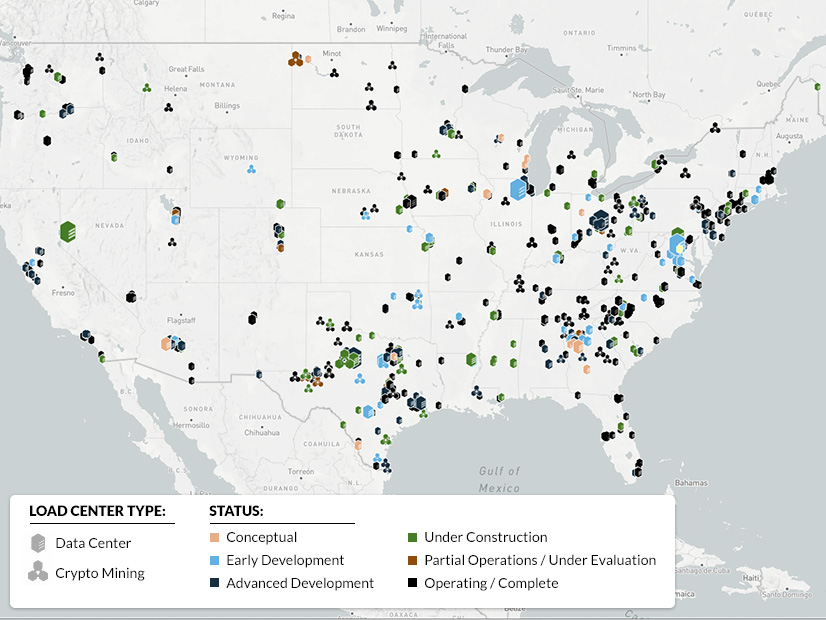The growing trend of pairing power-hungry data centers with clean energy resources is sparking mixed feelings among some regulators.
On the one hand, the planned reopening of Three Mile Island Unit 1 will supply Microsoft with energy through a power purchase agreement. It’s also likely to supply some energy to the local grid, helping with decarbonization, according to Maryland Public Service Commissioner Michael Richard, who spoke during a WECC webinar on large loads Oct. 2.
But Richard was more concerned about the Susquehanna nuclear power plant in neighboring Pennsylvania, where Talen Energy wants to amend the interconnection service agreement to send some output to a co-located Amazon Web Services data center rather than to PJM. (See With Three Mile Island Restart, Debate Continues on Co-located Load in PJM.)
Richard also voiced concern about the possibility of data-center co-location at Calvert Cliffs nuclear plant, which he described as “one of those bedrock, in-state assets that we depend on.” Maryland imports about 40% of its electricity, he noted.
“As we drive toward decarbonization and cleaner resources, if we lose what we have, and just end up … importing and enabling the continued operation of coal plants and other fossil plants, that really doesn’t advance some of our goals,” Richard said.
Richard was more enthusiastic about co-location of data centers with potential wind facilities off the Maryland and Delaware coasts, where he said the centers could help make the economics of offshore wind work.
Resource Shortage
The webinar was part of WECC’s “Reliability in the West” discussion series. The focus of the Oct. 2 session was “large load experiences.”
Kris Raper, WECC’s vice president of external affairs, said the discussion had hit on a challenge that the West, and perhaps the entire nation, is facing.
“We don’t have enough resources to meet what is already going on,” Raper said, pointing to electrification and efforts to bring clean resources to the grid.
Webinar panelist Glenda Oskar, an economist in the Department of Energy’s Office of Policy, said DOE is looking at ways to help new data centers. One possible approach is siting data centers at retired coal plant locations, where existing infrastructure could be used.
DOE also wants to aid in the commercialization of “clean, firm technologies” that could benefit data centers, Oskar said. Those include next-generation geothermal, advanced nuclear and long-duration storage.
Webinar panelist Travis Metcalfe, energy projects manager at Amazon Web Services, said not all data centers are the same.
At some centers, customers might simply be looking for a place to back up their data once a day without using much energy.
“Then you have … AI and machine-learning models, which might be using enormous amounts of electricity,” Metcalfe said.
Back-up Generation
Even though Northern Virginia, the world’s largest data center market, is just across the Potomac River from Maryland, Richard said he didn’t encounter data center issues at the Maryland PSC until recently.
In 2023, a data center developer filed for an exemption from the PSC’s certificate of public convenience and necessity (CPCN) requirement for 168 backup diesel generators totaling 504 MW.
Initially, the commission rejected the request. But recognizing the state goal of promoting data center development, the commission later approved a waiver for 25 generators totaling about 70 MW — enough for the first phase of the project, Richard said.
The issue then ended up before the Maryland legislature. A bill requested by the governor (SB 474/HB 579) was introduced this year to remove the CPCN requirement for backup power at “critical facilities,” which include hospitals, health care facilities and data centers.
The legislature passed the bill, which took effect July 1.



